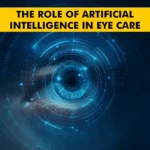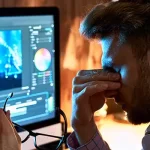Kids’ Eyecare
Spotting Vision Problems & Treatment of Eye Cancer in Children at an Early Stage
While all parents have a protective and responsible attitude towards their children, sometimes we tend to overlook early signs that might affect the children’s eyesight or even cause blindness. For instance, did you know that Pediatric Glaucoma, which occurs when the pressure in the eye is elevated, causes damage to the optic nerve? Other more common conditions that might affect a child’s vision include Strabismus (crossing of the eyes), Amblyopia (poor vision in one or both of the eyes). In such a case it is important to consult an eye specialist for the treatment of eye cancer in children so that the child’s development is not hindered.
What are the symptoms that parents should be aware of?
Pediatric Glaucoma is of two types – infantile and juvenile. Infantile Glaucoma becomes evident within a few months of birth. Its visible symptoms are:
- Children don’t want to open their eyes in the light
- The surface of the eye looks cloudy
- Eyes look teary
- Some children have enlarged corneas or very large eyes
Juvenile Glaucoma develops during adolescence and is often asymptomatic and it is noticed only if a child goes for a vision exam or routine evaluation. If adolescents complain of ‘tunnel vision,’ parents should take them to an eye specialist immediately. Juvenile Glaucoma can be treated typically with eye drops, pills or surgery. But for infants, surgery is usually recommended.
When should a child go for an eye examination?
Doctors perform simple vision tests from birth however, for older children; vision tests and regular eye evaluations are advisable. The tests are done to check pupils, ability to see well with each eye and look for a red reflux in the retina to examine the possibilities of cataract or any other thing. Even at the age of 3-4 yrs, you can take your child to pediatrician for measuring sharpness of vision. Remember to go for annual checkups if your child wears prescription glasses or contacts so that vision changes can be screened.
How to spot vision problems in children?
- poor visual tracking (following an object)
- extreme light sensitivity
- poor focusing
- chronic redness or tears in the eyes
- a white pupil instead of black
- abnormal alignment or movement of the eyes (after 6 months of age)
- constant eye rubbing
- sitting too close to the TV
- inability to read the blackboard
- difficulty in reading
- squinting
What are the common eyesight problems in children?
- Amblyopia (“lazy eye”) – Poor vision in an eye that may appear to be normal. Amblyopia is best treated during the preschool years.
- Strabismus – Misalignment of the eyes. Vision can be restored by patching the properly aligned eye, surgery or specially designed glasses.
- Refractive errors – Blurred images due to the shape of the eye which doesn’t refract or bend properly.
- Nearsightedness (Myopia) – Poor distance vision usually treated with glasses or contacts.
- Farsightedness (Hyperopia) – Poor near vision usually treated with glasses or contacts.
- Astigmatism – Imperfect curve of the front surface of the eye usually treated with glasses.
- Retinoblastoma – Malignant tumor that usually appears in the first 3 years of life which may cause loss of vision and whiteness in the pupil.
- Infantile cataracts – Clouding of the eye’s lens.
- Congenital Glaucoma – A rare condition that may be inherited caused due to incorrect or incomplete development of the eye drainage canals before birth. It can be treated with medication and surgery.
*The views expressed here are solely those of the author in his private capacity and do not in any way represent the views of Centre for Sight.





